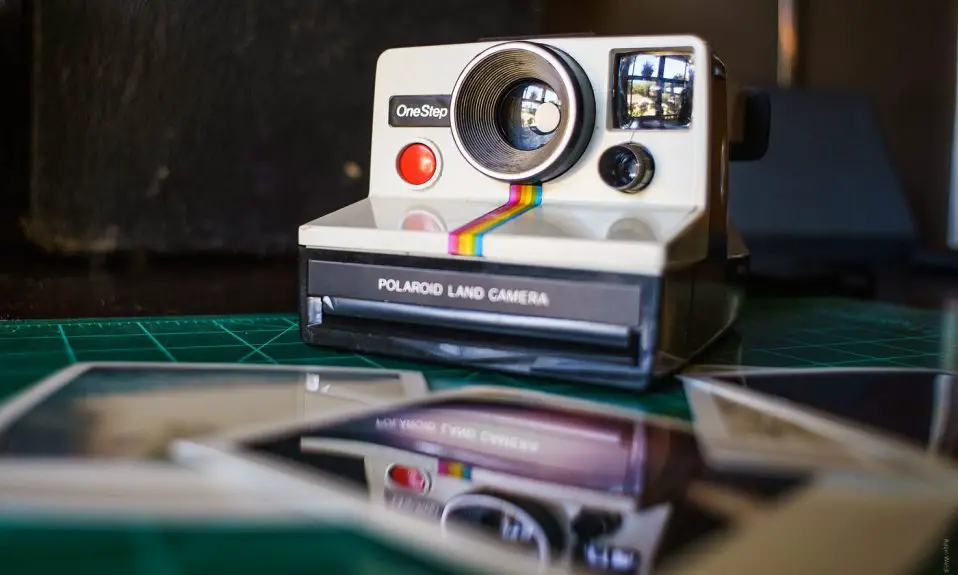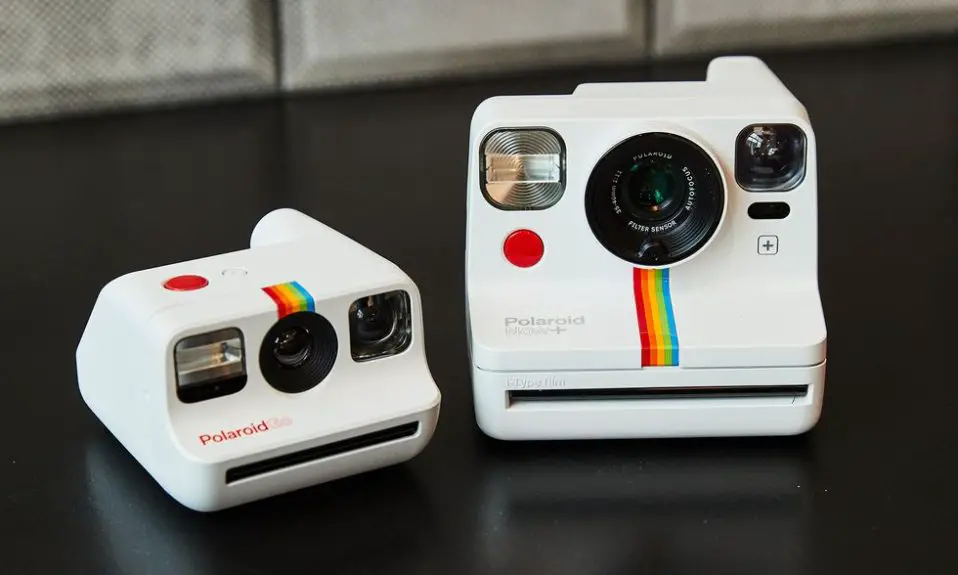When a Polaroid picture emerges from the camera, the tactile experience of watching the image develop before your eyes is part of the unique charm of instant photography.
However, once the anticipation of the image’s reveal has passed, the question arises: what next? The allure of these iconic images doesn’t end with their printing; in fact, that’s where the creativity begins.
As a tangible memento of a moment in time, a Polaroid picture offers various possibilities that complement its vintage appeal.
I understand that the ways in which these instant photographs can be utilized are as diverse as the subjects they capture.
Whether it’s preserving them in a personal album, showcasing them as part of home decor, or incorporating them into artistic projects, each Polaroid holds the potential for further personalization.
The photo’s classic white border provides a perfect space for annotations, making each image a narrative piece in itself.
By engaging with these printed memories, I am able to make each photograph a centerpiece of conversation or a treasured keepsake.
Managing a Polaroid requires proper handling and storage to ensure the longevity of these delightful snapshots.
Giving them time for the chemicals to fully develop and avoiding common storage mistakes are just the first steps in maintaining their condition over time.
It’s also important to consider how exposure to various elements like light, temperature, and humidity can affect their durability.
My knowledge of proper care techniques allows me to both appreciate and preserve the distinct quality that Polaroids bring to the world of photography.
Contents
- Understanding Polaroid Photos
- Handling Freshly Printed Photos
- Displaying Your Polaroid Pictures
- Preservation and Maintenance
- Digital Integration
- Repurposing Polaroid Prints
- Frequently Asked Questions
- How can you display a Polaroid photo creatively?
- What are the dos and don’ts for shaking a Polaroid picture?
- What are the best practices for storing Polaroid photos?
- How should you handle a Polaroid photo immediately after it prints?
- Can a Polaroid photo that didn’t develop properly be fixed?
- What are some methods to prevent overexposure in Polaroid pictures?
Understanding Polaroid Photos

In this section, I’ll detail the development process of Polaroid photos and what makes them distinct from other forms of photography.
The Instant Photo Development Process
Polaroid cameras use a unique chemical process to develop photos instantly. When I take a picture, the camera expels a film that contains all the necessary layers for photo development. Key steps include:
- Exposure: Light enters through the camera’s lens and exposes the film.
- Chemical reaction: Upon exposure, a reagent spreads across the film layers, triggering the development process.
Here’s a simplified representation of what occurs inside the film:
| Step | Action | Result |
|---|---|---|
| 1 | Reagent Spread | Initiates development |
| 2 | Dye Activation | Color dyes react to light and form the image |
| 3 | Image Emergence | Photo becomes visible after a few minutes |
The Uniqueness of Polaroid Pictures
Polaroid pictures are distinct for the following reasons:
- Immediacy: I receive a physical photo within minutes of capture, offering instant gratification.
- Tangible memories: The tactile experience of holding an actual photograph adds a sense of nostalgia.
Each photo is a one-of-a-kind snapshot due to potential variations in temperature and film chemistry, which can influence color and texture.
This uniqueness means that every photo I take with a Polaroid camera is an irreplaceable token of a moment in time, distinct from other imagery captured through digital devices.
Handling Freshly Printed Photos
When a Polaroid photo ejects from the camera, the image development process begins. This critical phase determines the quality and preservation of your photographic memory.
The First Minutes After Printing
In the minutes after a Polaroid picture prints, it is sensitive to light and touch. I ensure it’s shielded from direct sunlight, as UV rays can affect the developing chemicals.
I recommend placing the photo face down on a flat, non-abrasive surface and avoiding the urge to shake it, contrary to popular belief, which does not speed up the development process.
Proper Handling Techniques
Handling a fresh Polaroid requires care to maintain its integrity. I use the following approach:
- Avoid Touching the Surface: Direct contact can leave fingerprints or smudges, so I handle the photo by the edges when necessary.
- Temperature and Humidity Considerations: Extreme temperatures and high humidity levels can warp or damage the photo. I keep it in a temperate, dry place while it develops fully.
- Giving It Time: Every Polaroid photo needs time for the chemicals to set. I refrain from placing it in albums or exposing it to adhesives for at least 30 days to prevent chemical reactions that could ruin the picture.
Displaying Your Polaroid Pictures
After printing, showcasing Polaroid pictures can transform them into decorative pieces that add personal touch to any space.
Choosing the Right Location
When I decide on the location for displaying my Polaroid pictures, I consider light exposure, visibility, and decorative harmony. I ensure that the photos are placed:
- Away from direct sunlight to prevent fading.
- At eye-level in high-traffic areas for optimal viewing.
- In locations that complement the room’s color scheme and décor.
Creative Display Options
I explore a variety of creative methods to display my Polaroid photos, such as:
- Hanging Strings: Securely attach a string to a wall and use small clips to hang the pictures.
- Photo Grids: Create a grid pattern on a wall using removable adhesive strips to arrange the photos symmetrically.
- Magnets: Utilize magnetic boards or refrigerators to showcase pictures with the support of small magnets.
Frames and Albums
Choosing a frame or album for my Polaroids helps protect them and gives a structured look. I consider:
- Frames: Simple, clear frames that don’t overpower the image and coordinate with room décor.
- Albums: Quality albums with acid-free pages are essential to preserve the photos over time.
Preservation and Maintenance
To ensure the longevity of Polaroid pictures, it’s crucial to focus on proper storage and careful handling. The delicate nature of these photos requires attention to environmental factors and gentle cleaning practices.
Avoiding Sunlight and Heat
Exposure to direct sunlight can be detrimental to Polaroid pictures. I recommend storing your photos in a cool, dark place to prevent the colors from fading. When displaying them, choose an area away from windows or consider framing them behind UV-protective glass.
- Temperature: Ideally, keep Polaroid pictures in an environment below 70°F (21°C).
- Storage: Use a dark storage box or an album with acid-free pages.
Cleaning and Dusting
To clean the surface of a Polaroid picture, gently dust it with a soft, dry brush. If fingerprints or smudges appear:
- Use a microfiber cloth to lightly dab the affected area.
- Avoid using cleaning solutions as they can damage the photo’s surface.
Remember, the best practice is to handle your Polaroid photos by the edges to minimize contact with the image area.
Digital Integration
In this age of technology, integrating Polaroid photographs into digital formats enhances their accessibility and longevity. Scanning and sharing on social media are two key processes in this integration.
Scanning and Digital Storage
Firstly, I ensure the scanned image replicates the original Polaroid’s charm. Scanning can be done using various methods:
- Smartphone Apps: Dedicated instant film or document scanner apps provide convenience.
- Flatbed Scanners: They offer higher quality digital copies suitable for archiving.
- Digital Cameras: By taking a high-resolution photograph of the Polaroid, I can create a digital copy that maintains the Polaroid’s texture.
Storing these digital files is just as crucial. I use several backups to safeguard the scans:
- Local Storage Devices: Such as an external hard drive or a USB flash drive.
- Cloud Services: Like Dropbox, Google Drive, or iCloud for remote access and extra security.
Sharing on Social Media
Once the Polaroids are digitized, I share them on social platforms. Instagram and Facebook have features that cater to Polaroid aesthetics:
- Instagram: I use appropriate hashtags like #Polaroid and #InstantPhotography to reach a broader audience.
- Facebook: I post pictures in photography groups or on my timeline with context to generate engagement.
Privacy Settings: I ensure to adjust these settings before sharing to control who sees my photographs.
Repurposing Polaroid Prints
I’ve always found that Polaroid prints have a unique character that lends themselves well for creative repurposing.
Whether it’s transforming them into personalized items or hand-crafted gifts, the classic Polaroid offers endless opportunities to get inventive.
Crafts and DIY Projects
- Album Creation: I often assemble Polaroid prints into thematic albums using acid-free paper for long-term preservation. Enhancing these albums with handwritten notes adds personalized charm.
- Wall Art: Transforming Polaroids into wall art is simple. I select a pattern, like a heart or a map, adhere thumbnails to a canvas, and voilà—a personalized art piece emerges.
- Bookmarks: Laminating a Polaroid and attaching a ribbon can turn it into a functional bookmark.
- Emulsion Lifts: For a more artistic approach, I perform emulsion lifts by separating the image layer from the Polaroid and transferring it onto paper, creating an ethereal and painterly effect.
Gift Ideas
- Framed Memories: Gifting a framed Polaroid, perhaps with a personal note on the back, creates a keepsake that recipients tend to cherish.
- Magnets: I’ve made refrigerator magnets by attaching small magnets to the back of Polaroid prints, perfect for holding up notes or just for decoration.
- Personalized Greeting Cards: Incorporating Polaroid images into greeting cards gives a three-dimensional touch that stands out.
- Scrapbooking: By placing a Polaroid into a scrapbook interspersed with other mementos, I create a tactile and visually engaging gift.
Frequently Asked Questions
I’ve gathered some common questions about handling Polaroid pictures after printing, to help you treasure those special moments effectively and creatively.
How can you display a Polaroid photo creatively?
I can use magnetic frames to attach Polaroid photos to my fridge, or string them up on fairy lights to create an illuminating display. Picture ledges or shadow boxes can also offer a unique way to showcase my Polaroids.
What are the dos and don’ts for shaking a Polaroid picture?
I must avoid shaking my Polaroid photo after it prints because this can disrupt the developing process. It’s best for me to lay the photo flat and let the chemicals work their magic undisturbed.
What are the best practices for storing Polaroid photos?
For long-term storage, I should keep my Polaroid photos in a cool, dry place, away from direct sunlight. I must use archival-quality albums or boxes that are acid-free to prevent damage over time.
How should you handle a Polaroid photo immediately after it prints?
I need to handle the photo by the edges to avoid fingerprints on the surface. I should also let it sit undisturbed on a flat surface during the developing time.
Can a Polaroid photo that didn’t develop properly be fixed?
While I can’t fix an undeveloped Polaroid photo, I can minimize future issues by checking my camera’s film and battery levels before shooting and ensuring proper lighting during capture.
What are some methods to prevent overexposure in Polaroid pictures?
To prevent overexposure, I should shoot in well-lit environments without pointing the camera directly at bright light sources. I can adjust my camera settings, if available, or use an ND filter to manage the light entering the lens.





